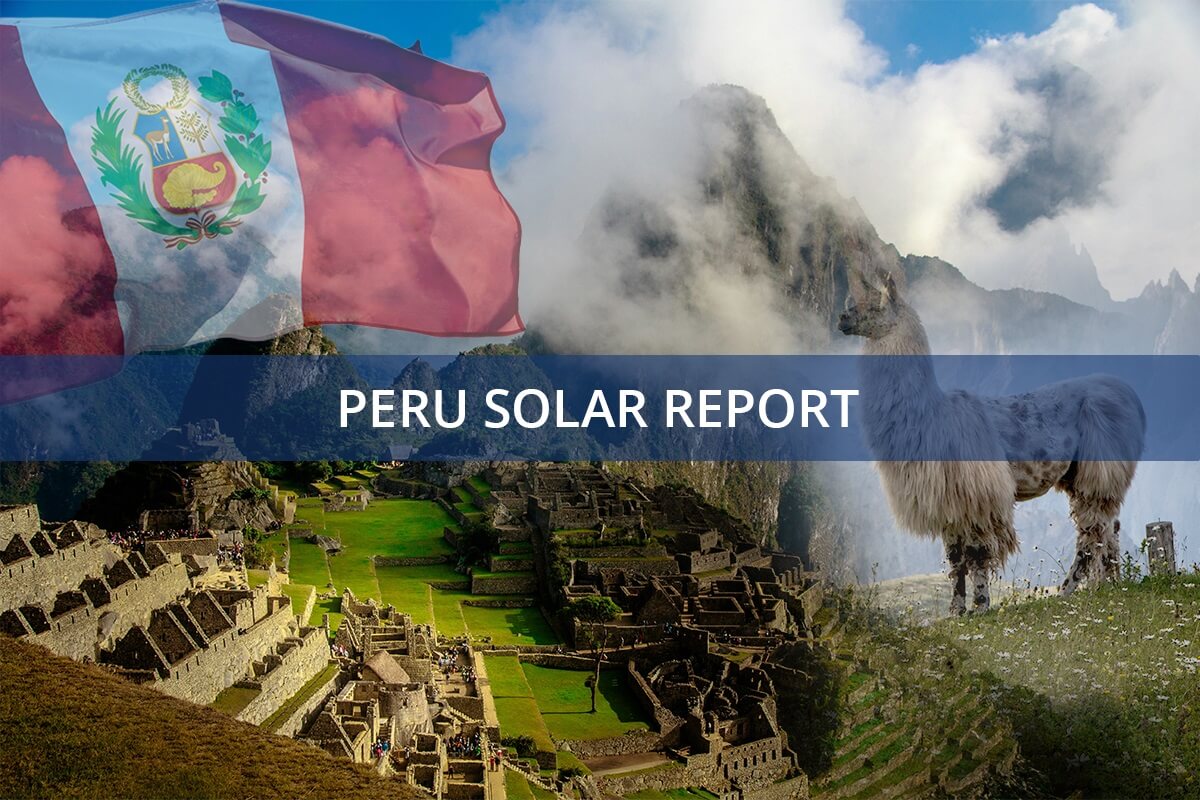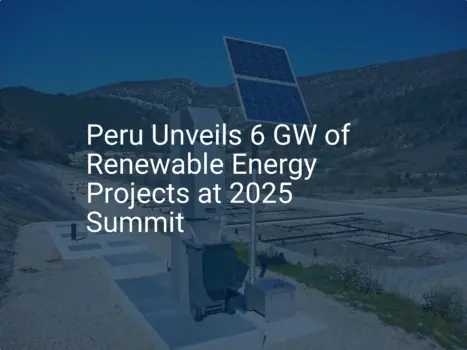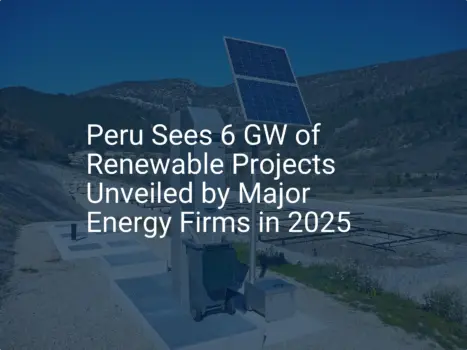The Peruvian Andes present a compelling paradox. The region enjoys some of the most intense and consistent solar irradiation on the planet, making it a prime candidate for photovoltaic energy. However, the very conditions that produce this solar potential—altitudes exceeding 4,000 meters—also create an operational environment so harsh that a standard solar module would face a drastically shortened and inefficient lifespan.
For any entrepreneur or investor looking to establish a solar presence in the region, understanding this paradox is fundamental. It is not enough to simply build a solar farm; one must engineer for resilience. This article explores the specific technical challenges of high-altitude environments and the design and material modifications needed to manufacture a solar module that can not only survive but thrive there.
The Unique Environmental Stresses of High-Altitude Solar
A solar module in a temperate, sea-level climate faces a predictable set of environmental factors. At high altitudes, these factors are amplified to extreme levels, creating a combination of stresses that demand a specialized engineering approach.
Key environmental challenges include:
-
Intense Ultraviolet (UV) Radiation: At 4,000 meters, the thinner atmosphere filters less of the sun’s rays. UV radiation can be 20–30% higher than at sea level. This intense exposure accelerates the degradation of a module’s polymer materials, such as the encapsulant and backsheet, causing them to yellow, become brittle, and crack over time.
-
Extreme Low Temperatures: Nighttime temperatures can frequently plunge below -20°C. This extreme cold creates significant mechanical stress within the module as different materials—glass, silicon cells, and metal conductors—contract at different rates, which can lead to microcracks in the solar cells or the failure of solder bonds connecting them.
-
Large Diurnal Temperature Swings: The difference between daytime highs and nighttime lows can be dramatic. This constant cycle of expansion and contraction, known as thermal cycling fatigue, places immense strain on all module components, particularly the delicate electrical connections.
-
Heavy Snow and Ice Loading: Significant snowfall is common, and the weight of accumulated snow can exert massive pressure on the module’s surface. An uneven snow load, where one part of the module bears more weight than another, can easily break the glass or deform the frame of a standard module.
Deconstructing the Module: Material Selection is Key
To withstand these amplified stresses, every component in the module’s bill of materials (BOM) must be re-evaluated. A robust, high-altitude module is built from the inside out with materials specifically chosen for their resilience.
Encapsulant and Backsheet: The First Line of Defense
The encapsulant (typically Ethylene Vinyl Acetate, or EVA) bonds the layers of the module together, while the backsheet protects the rear of the cells from the elements. In a high-UV environment, standard-grade versions of these materials will fail.
Ready to make big Profits?
The solar Industry is Booming
WE HELP NEWCOMERS to the solar industry start their own solar module production line. Customers can make BIG PROFITS by selling modules and finding investors, without wasting money and time on things they don't need!
-
Standard Approach: Typical modules use standard EVA and polyester-based backsheets.
-
High-Altitude Solution: UV-stabilized materials are critical. This may involve high-performance EVA formulations or a shift to alternative encapsulants like Polyolefin Elastomer (POE), which offers superior resistance to UV radiation and moisture ingress. For the backsheet, multi-layered films with a highly UV-resistant outer layer like Polyvinylidene fluoride (PVDF) are necessary to prevent degradation.
Solar Cells and Interconnects: Resisting Thermal Fatigue
The thermal cycling in the Andes puts enormous strain on the solder joints connecting the solar cells.
-
Standard Approach: Standard solder ribbons are used to connect the cells.
-
High-Altitude Solution: The answer lies in using more flexible interconnect ribbons or specialized conductive adhesives that can better absorb the stress of expansion and contraction. This small but critical change in the solar module manufacturing process significantly reduces the risk of cell-to-cell connection failures over the module’s lifetime.
Engineering for Mechanical Resilience
Beyond material science, a module’s structural integrity must be enhanced to cope with the physical forces at play—especially heavy snow loads.
Frame and Glass: The Structural Backbone
-
Standard Approach: A 3.2 mm thick front glass and a standard aluminum frame (e.g., 35 mm).
-
High-Altitude Solution: The front glass must be thickened, often to 4.0 mm or more, to increase its load-bearing capacity. The aluminum frame must also be reinforced, which involves using a thicker, more robust profile (e.g., 40 mm or 50 mm) and ensuring stronger corner key connections. This design prevents the module from warping or breaking under the weight of several feet of snow.
Electrical Performance and Long-Term Reliability
The final consideration is ensuring the module not only survives physically but also performs optimally over its 25+ year lifespan.
-
Potential Induced Degradation (PID): PID is a form of power loss caused by stray currents under high system voltages, a risk exacerbated by moisture. In the Andes, melting snow provides this moisture. Using certified PID-resistant cells and encapsulants is non-negotiable for ensuring long-term energy yield.
-
Heat Dissipation: The thinner air at high altitude is less effective at cooling modules through convection. This means modules can run hotter than they would at sea level, which slightly reduces their power output efficiency. This factor must be built into energy yield projections.
-
The Bifacial Opportunity: These environments also present a distinct opportunity. The high albedo (reflectivity) of snow-covered ground reflects a significant amount of light onto the rear side of the modules. Using bifacial modules, which capture energy from both sides, can lead to energy gains of 15–25%, helping offset other performance challenges.
Implications for Manufacturing and Investment
Producing a module for high-altitude deployment is not a simple matter of swapping components. It requires deep engineering knowledge and precise adjustments to the production line. For investors, this is a crucial due diligence point. Partnering with an experienced consultant who understands how to set up a turnkey solar production line equipped for these modifications is essential.
Based on experience from J.v.G. turnkey projects, addressing these regional specificities early in the factory planning phase is what separates a successful, bankable project from a costly failure. A factory that can verifiably produce modules for these niche, high-demand environments gains a powerful competitive advantage.
Frequently Asked Questions (FAQ)
Q: Do these modifications make the modules significantly more expensive?
A: There is a cost premium for using higher-grade materials and more robust structural components. However, this increased upfront investment is justified by a much longer operational lifespan, higher reliability, and superior energy yield, resulting in a lower Levelized Cost of Energy (LCOE) over the project’s lifetime.
Q: Can a standard solar module be used at high altitudes?
A: While a standard module will produce power initially, it is not designed for the combination of extreme UV, thermal cycling, and mechanical loads. Its performance will likely degrade much faster than its warranty predicts, and it faces a high risk of premature failure from issues like cracked cells or backsheet delamination.
Q: Are these challenges unique to the Andes?
A: No. These conditions are common to high-altitude regions worldwide, including the Himalayas in Asia, the Rocky Mountains in North America, and the Alps in Europe. The engineering principles discussed here are globally applicable for manufacturing modules intended for any mountainous environment.
Q: How does this affect the module certification process?
A: To prove their suitability for these conditions, modules must pass more rigorous certification tests. This often includes extended thermal cycling tests (e.g., 400 or 600 cycles instead of the standard 200), damp heat tests, and mechanical load tests that simulate pressures far beyond standard requirements.
Next Steps
The challenges of the Peruvian Andes serve as a powerful case study on the importance of application-specific engineering in the solar industry. Success is not achieved by finding the cheapest module, but by investing in the right technology for the environment. For entrepreneurs planning to enter this market, a deep understanding of the full solar module manufacturing process is the crucial first step toward building a resilient and profitable solar enterprise.









